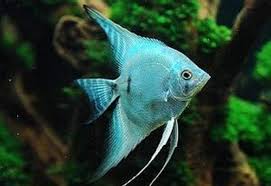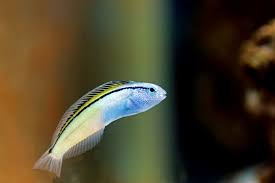
Dragons, one of the most mythical and revered creatures in folklore around the world, often hold symbolic power that transcends their physical form. In many cultures, dragons are seen as mighty beings with the ability to control natural forces, such as the weather, the sea, and even the elements of fire and earth. One of the most fascinating depictions of dragons arises in the mythology surrounding volcanoes, where these creatures are often portrayed as guardians or symbols of the destructive and creative powers inherent in volcanic activity. This article explores the role of dragons in various mythologies related to volcanoes, examining how these legendary creatures are entwined with the concept of volcanoes and their powerful, often dangerous, nature.
1. The Symbolism of Dragons and Volcanoes
Before diving into specific mythological stories, it is essential to understand the connection between dragons and volcanoes. Volcanoes are often viewed as the embodiment of the Earth’s raw power, with their eruptions symbolizing both destruction and creation. In many cultures, volcanoes are seen as the place where the Earth’s deep, hidden energies surface violently, reshaping the land and creating new worlds. Similarly, dragons are often symbols of primal forces—fierce, untamable, and capable of bringing about monumental change. As such, the intersection of dragons and volcanoes in mythology reflects this shared theme of immense power, destruction, and transformation.
Volcanic eruptions are unpredictable and terrifying events, and in many mythologies, dragons embody this volatile energy. They are often linked with both the dangerous forces of nature and the fertility of the land, showing the duality of volcanic activity as both a destructive and generative force.
2. Dragons in Greek and Roman Mythology: Typhon and the Volcanoes
In Greek mythology, one of the most significant dragon-like creatures associated with volcanoes is the monstrous Typhon. Typhon is often considered the father of all monsters and a creature of immense power, described as having multiple heads, each emitting flames. According to the myth, Typhon was imprisoned beneath Mount Etna, one of the most famous active volcanoes in Europe. The myth tells of Typhon’s battle with Zeus, the king of the gods. After Typhon was defeated, Zeus trapped him beneath the mountain, where his fiery rage continued to cause volcanic eruptions and tremors.
In this context, Typhon represents a dragon-like force—an embodiment of the destructive and uncontrollable energy of the volcano. Mount Etna, as Typhon’s prison, becomes a symbol of the immense power that lies beneath the Earth’s surface. The eruptions of the volcano, which were frequent and violent, were thought to be the fiery breaths of Typhon. This portrayal underscores the idea of dragons as guardians of volcanic power, their fiery breath equating to the lava that flows from volcanoes.
Similarly, the Roman version of the myth sees Typhon as a personification of the chaotic natural forces. Romans believed that his fiery spirit caused volcanic eruptions, with some ancient writers suggesting that Typhon’s rage was a direct cause of Mount Etna’s eruptions. This connection between Typhon and volcanoes helped establish the mythological link between dragons and the earth’s violent, explosive energy.
3. Dragons in Chinese Mythology: The Dragon Kings and the Volcanoes
In Chinese mythology, dragons are deeply associated with the natural world, including both the sea and the mountains. The Chinese dragons are thought to be powerful, divine beings that control the elements, including water and fire. In particular, the Chinese Dragon Kings, who rule over the four seas, are often depicted as powerful deities associated with storms, floods, and the elements of fire.
One notable story is that of the Dragon King of the East Sea, who is believed to be connected to volcanic activity in some regions of China. The island of Hainan, for example, has a significant number of volcanoes, and local legends suggest that the Dragon King lives in these volcanoes and is responsible for both the fertility of the land and the eruptions of fire. According to some stories, the Dragon King’s temper can cause volcanic eruptions if he becomes enraged, unleashing fiery lava upon the land as a result.
The dragon’s role in Chinese volcano myths is multifaceted. On one hand, dragons are seen as symbols of good fortune, fertility, and the promise of a bountiful harvest, but when angered, their wrath can trigger volcanic eruptions, earthquakes, and floods—destructive natural events that serve as a reminder of the immense power of nature. This dual nature mirrors the way volcanoes can be both life-giving and life-destroying forces in the landscape.
4. Dragons in Japanese Mythology: The Fire-Breathing Dragon of Mount Fuji
Japan, an island nation situated on the Pacific Ring of Fire, has numerous volcanoes, and its mythology is filled with dragons tied to these volcanic forces. The most prominent of these dragons is the legendary fire-breathing dragon that resides within Mount Fuji, the highest and most famous volcano in Japan.
In Japanese mythology, Mount Fuji is often depicted as the home of a great dragon, sometimes referred to as a “fire dragon.” This dragon is believed to possess the ability to control both fire and water, and it is said that the dragon’s fiery breath is responsible for volcanic eruptions. When the dragon is angered, Mount Fuji erupts, sending lava and ash into the sky, while its calming presence can bring peace and prosperity to the land. The dragon is seen as a guardian of the land, but also as a reminder of the destructive potential of volcanoes.
In other parts of Japan, particularly in the Okinawan islands, dragons are often depicted as being deeply tied to both the earth and the ocean. These dragons, sometimes called “Ryū,” are believed to control the forces of nature, including volcanic activity. While they are protective beings in many ways, they can also become violent when disturbed, leading to volcanic eruptions or earthquakes. Their connection to volcanic activity in Japanese mythology represents the balance between creation and destruction, where the eruption of a volcano can both reshape the land and provide new resources for life.
5. Dragons in Hawaiian Mythology: Pele, the Volcano Goddess
Hawaiian mythology offers a fascinating connection between dragons and volcanoes, particularly through the story of Pele, the goddess of volcanoes and fire. Pele is often depicted as a fiery, dragon-like being, with her presence tied to the volcanic eruptions on the Hawaiian Islands. According to Hawaiian legend, Pele resides in the Kīlauea volcano, one of the most active volcanoes in the world.
Pele is said to have the power to control the eruptions of Kīlauea, and her fiery temper is believed to be the cause of the volcano’s frequent eruptions. The volcanic lava, which flows like liquid fire from the volcano, is seen as Pele’s molten essence. In some versions of the story, Pele is depicted with dragon-like features, such as her fiery breath and the serpentine movement of lava as it snakes down the slopes of the volcano. As a guardian and creator, Pele is also revered for the land that is created from volcanic eruptions, turning barren landscapes into fertile soil.
The image of Pele as a dragon-like being reflects the duality of volcanic activity: while volcanoes can be destructive, they also give birth to new life, transforming barren land into a thriving environment. Pele’s mythological role emphasizes the volcanic process of creation through destruction, similar to the way dragons are both destructive and protective.
6. Dragons in South American Mythology: The Dragon of the Andes
In South American folklore, particularly in the Andean regions, dragons are often depicted as guardians of the mountains, including active volcanoes. These dragons are associated with the mountainous terrain and the fierce energy of volcanic eruptions. The mythical dragon of the Andes, in particular, is said to live in the high-altitude volcanoes that are found in countries such as Peru, Ecuador, and Chile.
The Andean dragon is believed to be a protector of the land, much like the dragons in other cultures. However, the dragon’s role in relation to volcanoes is more complex. It is said that when the dragon grows angry, volcanic eruptions occur, as the creature’s fiery breath is unleashed. These eruptions are seen as a way for the dragon to maintain balance in the natural world. On the other hand, when the dragon is calm, the volcanoes are dormant, and the land remains fertile.
In this way, the Andean dragon is a symbol of both destruction and regeneration, much like the volcanoes themselves. The belief in dragons as protectors of the volcanic mountains underscores the importance of these powerful natural features in the spiritual and cultural life of the Andean peoples.
7. Conclusion: Dragons and Volcanoes as Metaphors for Creation and Destruction
The image of dragons in mythology related to volcanoes offers a rich exploration of the balance between destruction and creation. From the monstrous Typhon trapped beneath Mount Etna to the benevolent yet fiery dragons in Chinese, Japanese, Hawaiian, and South American mythologies, dragons are depicted as embodiments of the tremendous power found in volcanoes. These creatures serve as metaphors for the raw, untamed forces of nature, and their presence in volcanic lore reinforces the idea that while volcanoes are capable of wreaking havoc on the land, they also possess the ability to create new life and new worlds.
The stories of dragons and volcanoes reflect humanity’s fascination with the unknown forces of nature and their ability to shape the earth. Whether as fearsome guardians, creators of fertile land, or symbols of divine power, dragons linked with volcanoes continue to captivate the imagination, illustrating the dual forces of destruction and creation that are intrinsic to the natural world.









